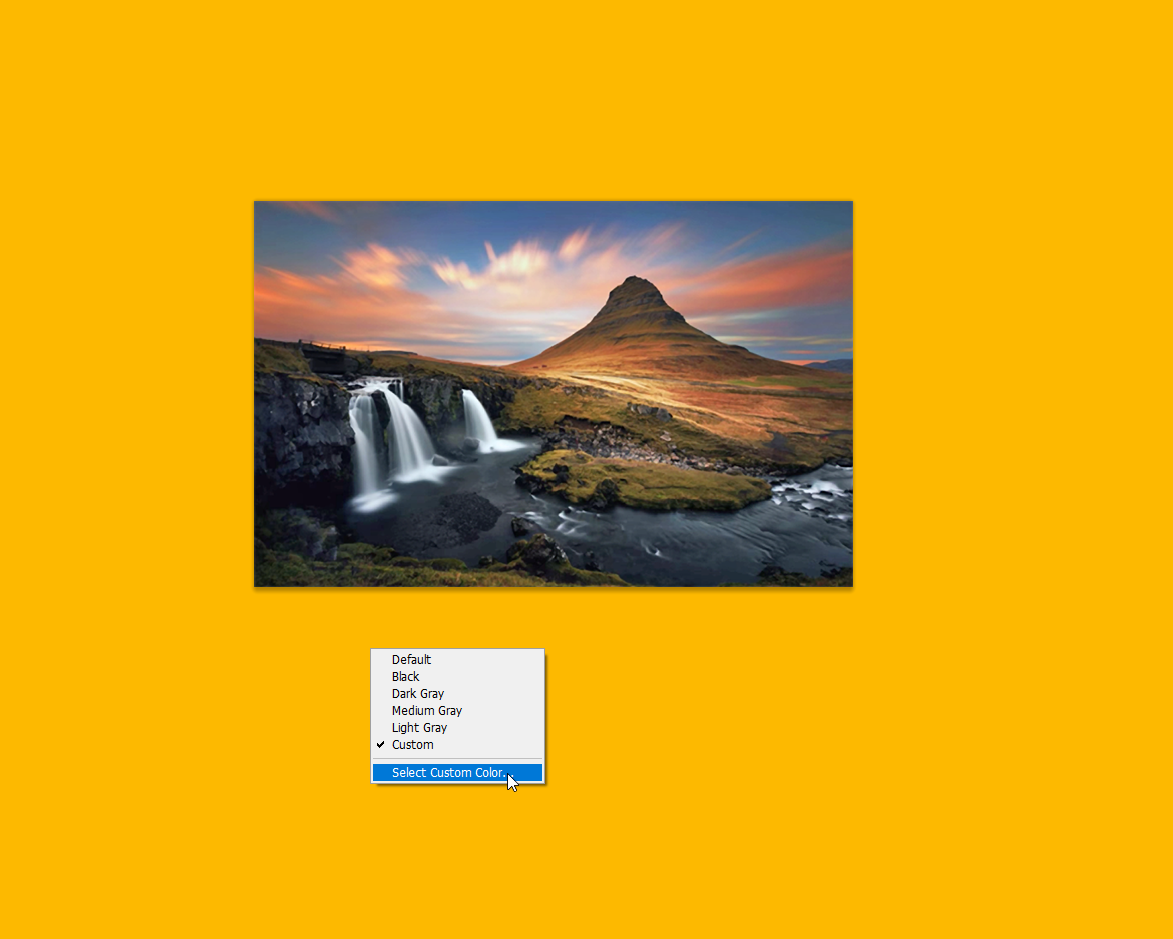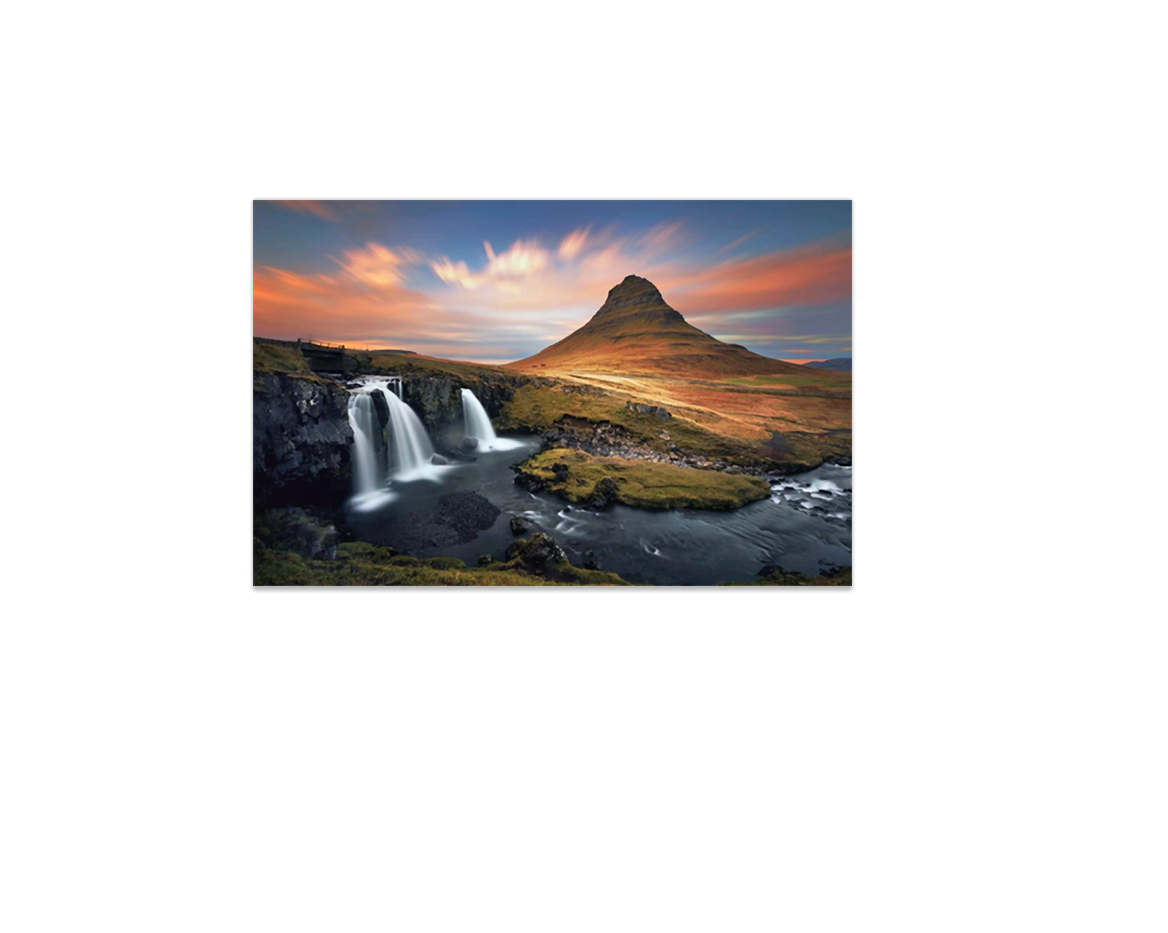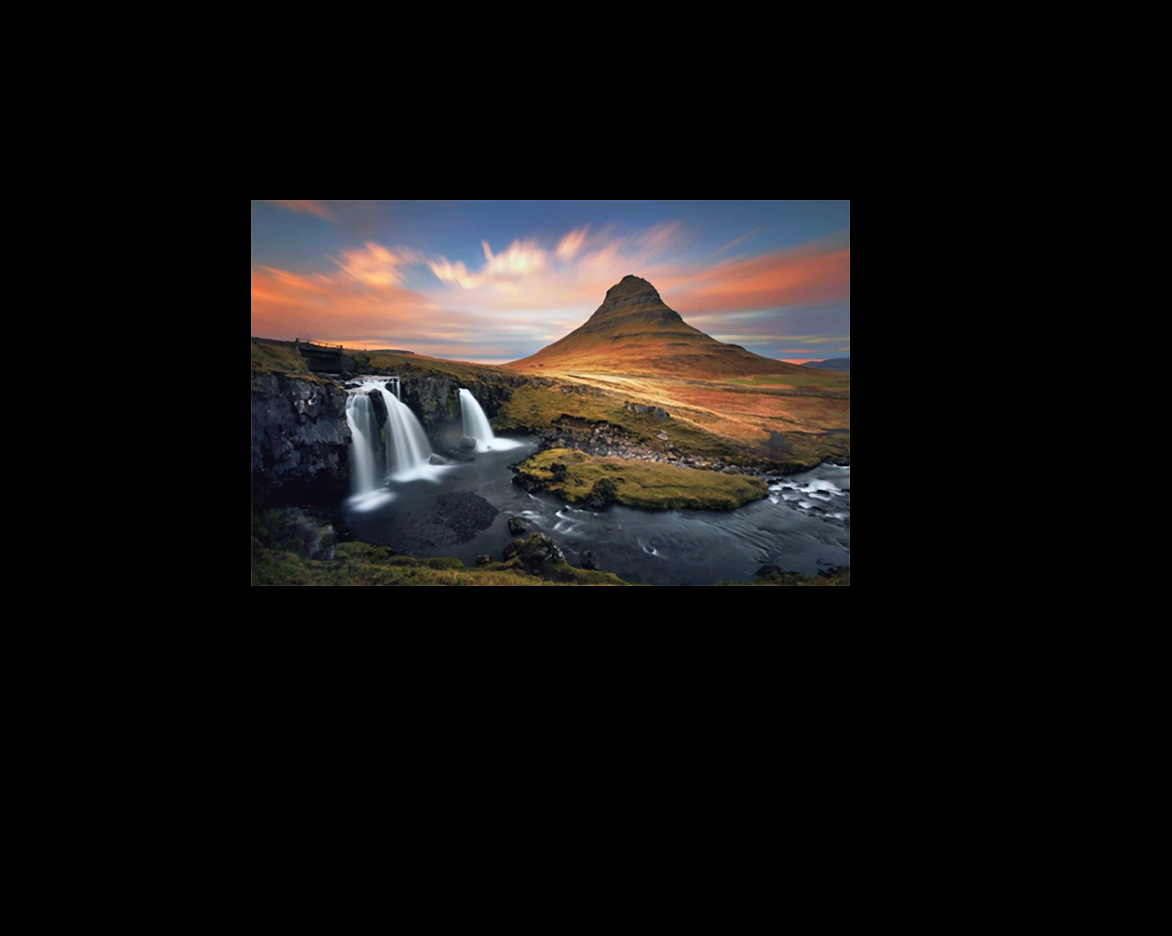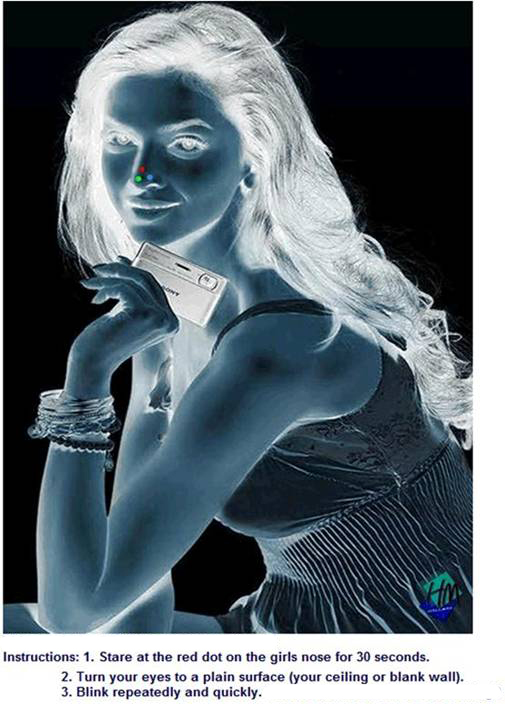- Home
- Photoshop ecosystem
- Discussions
- Why is the background color of the Photoshop appli...
- Why is the background color of the Photoshop appli...
Copy link to clipboard
Copied
Hello
For a long time, my mind is busy with a question. And I'm sure you can answer it.
Why is the background color of the Photoshop application designed gray?
What is the scientific reason?
Thank you and best wishes for you
 1 Correct answer
1 Correct answer
Because the area around an image affects the way you see that image. I am sure you realise that you can right click that area and chose a custom colour. Can you imagine walking into an upmarket gallery, and seeing a painting with a large yellow or green matte board around it? Look how different the last two examples below appear. Mid grey is neutral and has minimal affect on how we perceive an image. Does that answer your question?




Explore related tutorials & articles
Copy link to clipboard
Copied
Because the area around an image affects the way you see that image. I am sure you realise that you can right click that area and chose a custom colour. Can you imagine walking into an upmarket gallery, and seeing a painting with a large yellow or green matte board around it? Look how different the last two examples below appear. Mid grey is neutral and has minimal affect on how we perceive an image. Does that answer your question?




Copy link to clipboard
Copied
Thank you Trevor.Dennis
You have sent an appropriate response
But
Except for what you mentioned
Can there be any other causes?
Copy link to clipboard
Copied
Other than Trevor's excellent response about colour perception, the other reason that springs to mind for me is that I can spend hours editing images with the neutral, mid-grey background of Photoshop.
I could not spend very long editing with the background examples posted by Trevor above.
Copy link to clipboard
Copied
Thank you John Waller
Your answer is absolutely correct
I mean,
How many reasons can we say?
I am interested in knowing more answers
And at least 5 excellent reasons
Like those you said
Is there a text from Adobe in this case?
Copy link to clipboard
Copied
hosseinp93797315 wrote
I am interested in knowing more answers
And at least 5 excellent reasons
Like those you said
In this case, one excellent answer is all you need, and Trevor gave an excellent visual example.
Copy link to clipboard
Copied
https://forums.adobe.com/people/John+Waller wrote
I could not spend very long editing with the background examples posted by Trevor above.
I can‘t even scroll through Trevor’s background examples without physically wincing. Grey works for me.
Copy link to clipboard
Copied
Trevor is pretty much spot on. The designers for photoshop realize that to properly gauge color of an image you need a neutral background and surroundings. This is a standard with color correction, long before Photoshop existed.
Copy link to clipboard
Copied
Back in my film lab days, I went for an interview once at a place that had a "Viewing Room" that was completely grey—walls, floor, ceiling, cabinets, counter-tops. It was actually sort of disorienting to be in ![]()
Copy link to clipboard
Copied
Yes as mentioned by others to focus only on main subject surroundings are kept neutral so all the attention remain for subject....Thanks.
Copy link to clipboard
Copied
Having heard so many very good arguments for neutral backgrounds, a plea against white walls might be interesting.
Sorry, it's only a Google translation.
Best regards --Gernot Hoffmann
A plea against white walls
http://herzogantonulrich.de/museum-backstage-mut-zur-farbe
19. Februar 2018
Herzog Anton Ulrich-Museum
Braunschweig, Germany
Courage to color
One thing is certain: when we reopen our museum in autumn 2016, we will make the world more colorful. Purple,
sky blue, lemon yellow or lime green - the walls of our new showrooms shine in all the colors of the rainbow.
The Gemäldegalerie brings it to six different colors, while the exhibition floor on the second floor presents itself
in twelve different color garments. White walls can not even be found in staircases or service areas, because
here, too, the architecture retains a delicate outline in cream and stone tones, reappearing as it was originally
conceived in the 19th century.
Why such a rush of color? Can art handle that?
Oh yes. She can not only tolerate it, she wants it that way! White exhibition spaces, the concept of the "White
Cube", which became fashionable around 1920, is a staging of classical modern and contemporary art. One of
the ulterior motives of this concept was to prevent any interaction between the exhibition architecture and the
artwork. The artwork should talk to the visitor, without background noise. You can make modern art talk, but old
masters can only whisper. A painting painted in the 16th or 17th century does not have much to tell you in front
of a white wall. Our eye can hardly distinguish the subtle nuances of the motif created in several layers of paint
applied against the dazzling white of the background. This is called a "crossfade effect".
The eye adjusts to the brightness of the background color, the actual leading actor on the wall, the painting with
its fine, but muchdarker color facets, blurs into a shadowy spot on the wall. The fact that white is not an ideal
background color, by the way, is not only true for dark-toned paintings or dark bronze sculptures. Even bright
materials such as marble or alabaster do not flourish against a white background, the natural materials even
look dirty at worst.
Old art is therefore more effective in front of colored backgrounds than in front of brilliant white. But here too
there are differences. The new picture gallery is dominated by bright shades of blue, red and green, while the
sculpted and applied art on the second floor features bold colors such as purple, lemon yellow (see picture
above) and grass green, as well as soft like honey yellow or blue gray.
The reason: the colors are a means to an end, and the purpose is to provide our art with the right ambience.
The picture gallery consists of meter-high rooms with a lot of wall surface, so that the colors look very intense,
and the paintings hang directly on the wall.
Therefore, we have chosen bright colors that gently lift the art while supporting the open space feeling of the
spacious architecture.
The galleries on the second floor have a smaller ceiling than the picture gallery and are divided into smaller units,
the sculptures,porcelain, furniture, lacquer, coins, majolica and other treasures are not presented directly on the
wall, but in showcases or on pedestals. The spatial situation offered us the chance to choose colors such as
lemon yellow or grass green, which would be toointense for the atmosphere on meter-high wall surfaces like in
the picture gallery. On the second floor, each of the twelve theme areas has its own color. Once again, we had
both the art and the visitor in mind during the design.
The frequent color changes are refreshing and encourage you to experience each room as a new chapter.
At the same time, we were able to create a background for our works of art that emphasizes the thematic context
and thus optimally emphasizes it. For example, the rooms on the theme of "branding" (The Prince as a brand)
are held in stately purple tones, the theme room on faith and religion in a light sky blue, and so on.
The colors have long been set, the rooms are now the finishing touch to the return of art. Did we choose correctly?
As of October, we as readers of this blog will see it as we bring the first works into their new environment.
Copy link to clipboard
Copied
Gernot, I actually work at an art museum, so that's interesting. We are acutely aware of the effects of the traditional "white cube" vs colored walls, and it's a big discussion every time. We usually repaint with every exhibition (I say "we", but our graphic designer and the curators decide this).
But these two are different. In an exhibition we want to put the audience in a certain state of mind. I can't do that in front of the computer. I need to be neutral - but most of all, I need "what you see is what you get". It won't be printed with a colored frame, it will be printed on white (or yellowish) paper.
If the OP needs one single "scientific" reason, it can be summed up with that: What I see is what you (hopefully) get.
Copy link to clipboard
Copied
I agree with all the above - 50% gray for the background so that your eye/brain is not biased. For similar reasons I also set the Photoshop UI to Light gray. With a dark interface, which for some reason became popular a few years ago, the tendency is to adjust the images too dark.
Dave
Copy link to clipboard
Copied
Yes, and that is still a huge problem with Lightroom, which for some reason doesn't have a light UI option. You can set a white image backdrop within the UI, but that turns the whole UI into a dizzying frenzy of high contrast which only makes it worse.
Even yours truly, who is very much aware of these things, frequently open images from Lightroom only to discover they're muddy and too dark.
I have a theory. The dark UI became popular because it makes everything look good. It has immediate appeal. What it does is remove the visual reference for tonal relationships, so all the defects are hidden or at least toned down.
Copy link to clipboard
Copied
https://forums.adobe.com/people/D+Fosse wrote
I have a theory. The dark UI became popular because it makes everything look good. It has immediate appeal. What it does is remove the visual reference for tonal relationships, so all the defects are hidden or at least toned down.
There's truth in that. There used to be a similar trick with cell phone cameras where the phone's JPG processing would crush the blacks creating contrast, and at first glance, a nice looking picture. A buddy of mine complained that the RAW files from his Nikon DSLR were not as good as the pictures his wife took with her cell phone. I told him to switch to JPG and choose a Dynamic preset, and he had nice looking pictures.
Pushing up that black point is a pretty good noise reduction tool as well. ![]()
Copy link to clipboard
Copied
The curious thing is that today we see crushed blacks as a defect to be avoided. But you and I are old enough to remember Kodachrome and Velvia, where it was accepted practice to underexpose a third to half stop - precisely to "crush" the blacks into solid, impenetrable darkness _and_ make the colors pop. We all did it because that's what the National Geographics' photographers did. All to make it look good.
But still, there is a fundamental difference between editing environment and final presentation.
Copy link to clipboard
Copied
Totally agree on the Lightroom UI.
The nearest you can do is set the "Lights out" option to Light Gray in Preferences > Interface then Press L whilst editing for a sanity check. I would much prefer the option set a lighter UI though.
Dave
Copy link to clipboard
Copied
I always use a white background, because my work will either be printed on white paper or displayed on a web page with a white background, and I also need to see how the edges of the image interact with the background. (like how bright should a highlight be to separate from the background, but not look to dark)
Using a white background can be tough on the eyes, so I sometimes temporarily change it to gray, or even black, especially if most of the image is off screen.
https://forums.adobe.com/people/D%20Fosse wrote
Yes, and that is still a huge problem with Lightroom, which for some reason doesn't have a light UI option. You can set a white image backdrop within the UI, but that turns the whole UI into a dizzying frenzy of high contrast which only makes it worse.
I agree that the Ligtroom interface is too dark, but I do use a white background in LR as well, have been doing so since version 2.
It may look a little strange at first, but it works perfectly for me, and I never think about it.
A big problem for me with LR in the past was that there was no way to turn off the drop shadow in Develop, which made it impossible to see the image edges properly, so i was constantly using Lights out with a white background.
Luckily, this changed in version 6 and later versions – the drop shadow disappears when the GPU is activated.
Copy link to clipboard
Copied
davescm wrote
I agree with all the above - 50% gray for the background so that your eye/brain is not biased.
The first thing I do with a new computer (or any I will be using) is to change the screen background to a 50% gray as well.
I’m glad to hear that some others are not fond of the dark interface in Photoshop and for the reasons why.
Copy link to clipboard
Copied
As Trevor brilliantly illustrated, 50% Grey is neutral. I also have my desktop set to 50% grey for the same reason. It is the least distracting and won't affect your color perception. Here's more about color perception. One of the many things that designers are taught on graphic design degrees. If you feel like you need more help in learning the principles of design there's a book here that can help you 🙂
Best background image for the best color perception | Datacolor
Copy link to clipboard
Copied
I am a little late to the party but, as a retired printer, here is my contribution:
Prior to the introduction of Photoshop, letterpress printers and lithographers spent a considerable amount of time comparing reflection art* to its printed reproduction. In order to avoid the surround exerting an influence on perception, an industry-specific standard was established and special viewing booths constructed. The standard is Munsell N8, a value of gray slightly lighter than N7, which is used as the standard surround for comparing paint chips and fabric colors. The value of a gray surround compared to black or white has been mentioned here so there is little need to repeat it. I would add that it would probably help if you Googled “simultaneous contrast.” Although the following is a commercial site, the information there may be useful: https://www.rpimaging.com/munsell-neutral-gray-paint.html. It also displays N7 and N8.
*We worked with C prints, R prints, Cibachromes, Dye Transfers, Flexichromes and fine art.
FWIW: When viewing 35mm transparencies a special viewer was used. It was a self-contained, fixed projection distance slide projector that displayed the image on an N8 surround.
When the art was 6cm x 6cm, 4x5 or 8x10 Ektachomes, a viewing box meeting Kelvin, Color Rendering Index and level of illumination standards was used. Kodak advised that at least 3” of light box illumination should surround the chrome to create an optical flare and reduce visual color saturation and range somewhat and bring the viewed image closer to the limitations of ink on paper.
Copy link to clipboard
Copied
I know this well as a painter and digital artist- Just recently I was working on cloning out white label, so full-screen white, I started to see yellow blobs that werent really there...
A long time ago I was painting live on a highly reflective, bright orange surface ( road sign ) completely screwed my color perception for the night!
Copy link to clipboard
Copied
Ah, @ScooterD76, I believe that is something a bit different: Retinal Fatigue. You may want to Google it, or try an experiment with this image.

Copy link to clipboard
Copied
Is there any way to set the background color of the Application Frame? I like the dark gray interface for the way it makes the panels look. I find the panels wich are always open on my second monitor are distracting and hard to read with the light gray interface.
But I do not like the very dark Application frame in the dark gray interface. Can you change its color separately?
Find more inspiration, events, and resources on the new Adobe Community
Explore Now




